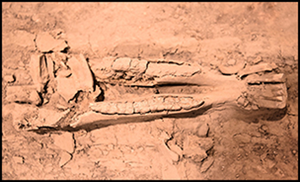Article contents
Horses in Qin mortuary practice: new insights from Emperor Qin Shihuang's mausoleum
Published online by Cambridge University Press: 20 June 2022
Abstract

The horse played a crucial role in China through the first millennium BC, used both for military advantage and, through incorporation into elite burials, to express social status. Details of how horses were integrated into mortuary contexts during the Qin Empire, however, are poorly understood. Here, the authors present new zooarchaeological data for 24 horses from an accessory pit in Qin Shihuang's mausoleum, indicating that the horses chosen were tall, adult males. These findings provide insights into the selection criteria for animals to be included in the emperor's tomb and invite consideration of questions concerning horse breeds, husbandry practices, and the military and symbolic importance of horses in early imperial China.
- Type
- Research Article
- Information
- Copyright
- Copyright © The Author(s), 2022. Published by Cambridge University Press on behalf of Antiquity Publications Ltd.
References
- 1
- Cited by


